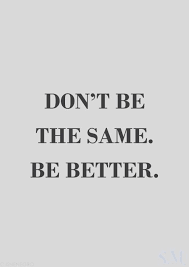A Kaizen Business System is a productivity philosophy in business, related to Continuous Improvement, and often demonstrated through Lean Management. It focuses on business processes and searches for inefficiencies, seeking to explore them in ways that get to the root of the problem to implement long-lasting change, profitability, high service levels and less waste. It creates a standard and culture for excellence and innovation.
Kaizen is a Japanese term that generally translates to “change for the better” and business owners who employ its strategies can see better relationships with vendors, employees and customers. These relationships create real results in quality, efficiency, productivity and more.
The Tools in a Kaizen Business System
A Kaizen Business System is more of a philosophy and set of tools implemented to create an outcome, than a tangible, or even software-based program, but tangible equipment and software can be used within it.
Overall, continuous improvement is robust and thorough, which also means time consuming in some cases, however, it does create complete, holistic and lasting results. This type of process creates more “buy in”, and produces a tangible outcome, not just theory. To get to its objectives, several tools are typically implemented, usually at the hands of an experienced Kaizen Business System Consultant. These steps can include:
Sort. Determine what you have and what you need. This can be skills, employees, materials, equipment, vendors, etc. Sorting is taking an inventory to determine the real gap and how to correct it.
Standardization. Examining processes and looking for redundancies and inefficiencies, then creating an organized and repeatable business process. This is huge in many businesses as department cross-over may have different people doing the same task, and/or doing it differently. It can make employee training problematic, data collection incomplete, and can even halt production.
Measuring. Measuring data helps determine if a business process is efficient and if it can be duplicated, predictable, consistent and used for decision-making. Without quantifiable data, decision-making is really just a guess and can lead to loss in productivity, profitability, and quality.
Compare. When you have data, you can compare it against your goals, objectives, and standards of operation. From the comparisons, you can address the performance gaps and improve your desired results. Again, without data, you are making a guess as to what the gap is, and therefore ineffectively addressing it.
Innovation. Work smarter, not harder and continually look for what isn’t working or what may work better. Innovation culture starts with the desire to grow, and growth doesn’t happen without addressing failures and inefficiencies. Getting to the true cause of a problem creates real solutions.
Sustainability. Really getting clear on processes helps create business processes and a continuous improvement culture that is sustainable and reliable, even in the face of change. When questions are asked and processes are viewed objectively, it cuts through “band-aid” fixes sure to fail.
Overall, continuous improvement, Kaizen business system, and business process improvement are one in the same, implementing a full breadth of tools, techniques and philosophies resulting in better outcomes. As a Kaizen business system consultant, PBEX, LLC is ready to dig in and really understand your processes to create standardized, sustainable, profitable and agile business processes for your growth. Contact Peter Holtgreive today to learn more or to get started.


